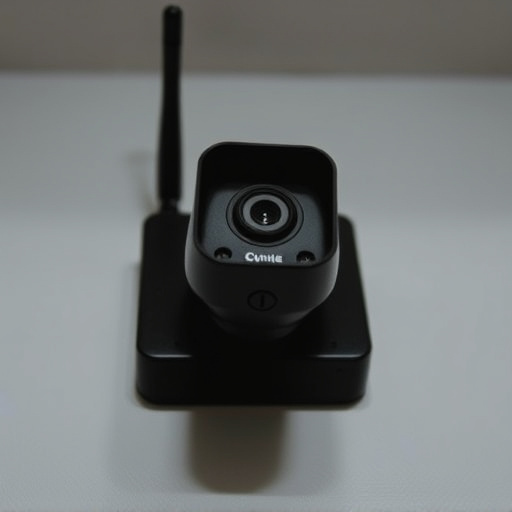Hidden spy cameras, driven by tech advancements, utilize Wi-Fi, Bluetooth, or RF signals for wireless surveillance in homes, offices, and public spaces. Their versatility allows diverse applications from security to law enforcement. Legal and ethical considerations regarding privacy are crucial, with strict regulations globally against unsanctioned surveillance. Setting up these devices requires strategic discretion, encryption, and regular testing for secrecy. Advanced features like motion detection, night vision, and cloud storage enhance utility and usability of hidden spy camera wireless systems.
Uncover the intriguing world of hidden spy cameras, powered by advanced wireless technology. This comprehensive guide explores the inner workings, diverse applications, and legal nuances surrounding these covert devices. From their microscopic size to sophisticated features like motion detection and night vision, we demystify how they operate and where they’re commonly used. Learn about ethical considerations and essential tips for discreet setup, ensuring a balanced perspective on this fascinating yet controversial technology.
Understanding Hidden Spy Cameras: Wireless Technology Unveiled
Hidden spy cameras, often referred to as wireless surveillance devices, have evolved significantly with advancements in technology. At their core, these cameras utilize wireless communication protocols to transmit video and audio data without the need for physical cables or wires. This capability makes them versatile and easier to install in various locations, from homes to offices and public spaces.
The wireless nature of hidden spy cameras is facilitated by technologies like Wi-Fi, Bluetooth, or dedicated radio frequency (RF) signals. Each offers unique advantages in terms of range, data transfer speed, and power consumption. For instance, Wi-Fi provides a familiar infrastructure for connecting devices to the internet but may require line-of-sight access. Bluetooth, on the other hand, offers short-range connectivity with lower data transmission rates, ideal for close-proximity monitoring. Understanding these wireless technologies is key to recognizing the potential applications and limitations of hidden spy cameras in different settings.
Types and Applications: Where Are They Used?
Hidden spy cameras, or wireless hidden cameras, come in various types designed for specific applications. These range from miniature cameras that can be concealed in everyday objects like keys, pens, and even clothing, to more sophisticated models integrated into items such as light bulbs, smoke detectors, and power outlets. Their versatility allows them to find use in numerous settings.
In the realm of home security, hidden spy cameras are employed to deter theft and monitor activities within living spaces. They also serve as powerful tools for surveillance in businesses, helping to protect valuable assets and prevent fraud. Additionally, these wireless devices find applications in law enforcement, providing critical visual evidence during investigations. Some are even designed for outdoor use, offering remote monitoring of properties and landscapes.
Legal Considerations: Ethical Use and Privacy Concerns
The use of hidden wireless cameras, or hidden spy cameras, raises significant legal and ethical considerations, particularly regarding privacy. While some jurisdictions allow the use of such devices for legitimate purposes like security and surveillance, strict regulations often govern their deployment. The legality varies across regions, with many countries having stringent rules against surveillance without consent.
Using a hidden spy camera wireless for invasive or malicious purposes can lead to severe legal consequences, including fines and imprisonment. Respecting privacy rights is paramount, especially in public spaces. Ethical use demands transparency and obtaining consent when feasible. It’s crucial for individuals and organizations employing these devices to understand local laws and adhere to ethical standards to avoid potential legal pitfalls and protect the privacy of those being monitored.
Setting Up a Hidden Camera: Tips for Discretion
Setting up a hidden spy camera wireless requires careful consideration for discretion. The goal is to install the device unobtrusively, ensuring it remains undetected while capturing the desired footage. This often involves choosing the right location—a spot that offers clear view but stays out of plain sight. For instance, placing the camera behind a picture frame or inside a decorative object can make it virtually invisible. Additionally, adjusting the camera’s field of view and ensuring proper lighting are crucial steps to maintain secrecy.
To enhance discretion, consider using night vision capabilities if capturing footage after dark. Wireless signals should be secured with strong encryption to prevent detection or hacking. Regularly test the setup to ensure smooth operation and check for any signs of movement or sound that could give away the camera’s presence. By following these tips, you can successfully deploy a hidden spy camera wireless while maintaining maximum secrecy.
Advanced Features: Motion Detection, Night Vision, and Cloud Storage
Advanced features on modern hidden spy cameras, such as motion detection, night vision, and cloud storage, significantly enhance their utility and versatility. Motion detection allows the camera to automatically capture footage only when movement is detected, conserving storage space and battery life. This feature is particularly useful for monitoring sensitive areas without constant surveillance.
Night vision technology enables clear imaging in low-light conditions, making it ideal for installations in dark environments or during nocturnal activities. Cloud storage further enhances accessibility by allowing users to view and manage footage remotely through a secure online platform. This feature provides peace of mind, as users can check on their properties or monitor activities from virtually anywhere with an internet connection.
